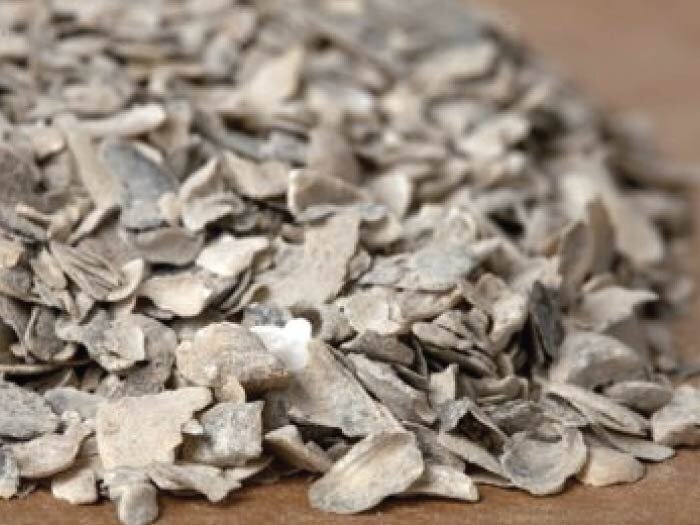We are in the prime laying season for ducks, chickens and game birds, and to ensure they are laying the best eggs possible, a strong shell is needed. An eggshell is approximately 95% calcium carbonate, and a growing egg will draw upon the laying bird to get the calcium it needs. Laying ducks, chickens and game birds are challenged with getting enough calcium to both keep their skeletal structure healthy and produce strong shells on their eggs. When your birds reach laying age, be sure to provide them additional calcium to help them lay the strong, healthy eggs that we love.
Without the right amount of calcium, eggs suffer. Too little calcium in the diet can result in a soft shell, cracked shells or even no shell at all, which is commonly called “rubber egg.” Any calcium in a laying hen’s body will first be put toward strengthening the egg shell. Insufficient calcium can result in the body pulling from other calcium-rich areas, such as bones or beaks, which is detrimental to the chicken. If they have too much calcium, the eggs may have an extra coating of powdery calcium around the entire egg or calcium deposits around the shell.
In order for ducks and chickens’ bodies to properly process calcium, Vitamin D3 is needed. Vitamin D3 helps calcium be efficiently absorbed into the bloodstream and transferred to the shell gland, where the egg shell is formed. All Scratch and Peck poultry feeds contain Vitamin D3 Supplement to ensure that calcium is properly taken into the bloodstream. This need for Vitamin D3 is also why it’s essential to let birds free range – the sun is the best source of Vitamin D3.
During the laying years, supplemental calcium can be provided to chickens and ducks by providing oyster shells in a dish for free choice. Using a ground oyster shell helps birds more easily consume the calcium. A word of caution – ducks in general require less supplemental calcium than chickens. Also, if you have drakes, they do not require the amounts of calcium as laying ducks.
Cluckin Good Oyster ShellTo provide your birds with oyster shell, offer it free choice in a separate location than the food, rather than sprinkling it in or mixing it with their feed. Chickens usually self-regulate when it comes to knowing what they need and when. If the oyster shells are offered away from their food, they’ll pick at them as needed. It’s best to supplement chickens or ducks with oyster shells just prior to laying time to ensure that calcium levels at are at optimal levels when laying begins. We recommend offering free a choice Oyster Shell starting at about 20 weeks, when most birds begin laying.
All poultry keepers occasionally get a bad egg; Mother Nature cannot always be deterred! Staying informed and taking extra steps to ensure your birds are getting the nutrients and supplements they need will result in more nutritious eggs and healthier mama birds overall.
Orders
Services
About
Your Wilco Store
Store Hours
Monday to Saturday:
8 a.m. to 8 p.m.
Sunday: 9 a.m. to 6 p.m.
Need Help?
For questions or help with online orders call: (888) 78-WILCO
Limited to stock on hand. Some items may vary from photos. Because of store size limitations or geography, some items featured may not be available in all stores but will be made available by special order during sale periods at advertised prices. All sale prices listed as “dollars off” or “% off” are discounted from our regular posted shelf price, not from discounts given with specialty, bulk or pallet pricing. Reseller and Drop-shippers must contact us for pre-approval to place orders with the intent to re-distribute.
© 2025, Wilco Farm Store
